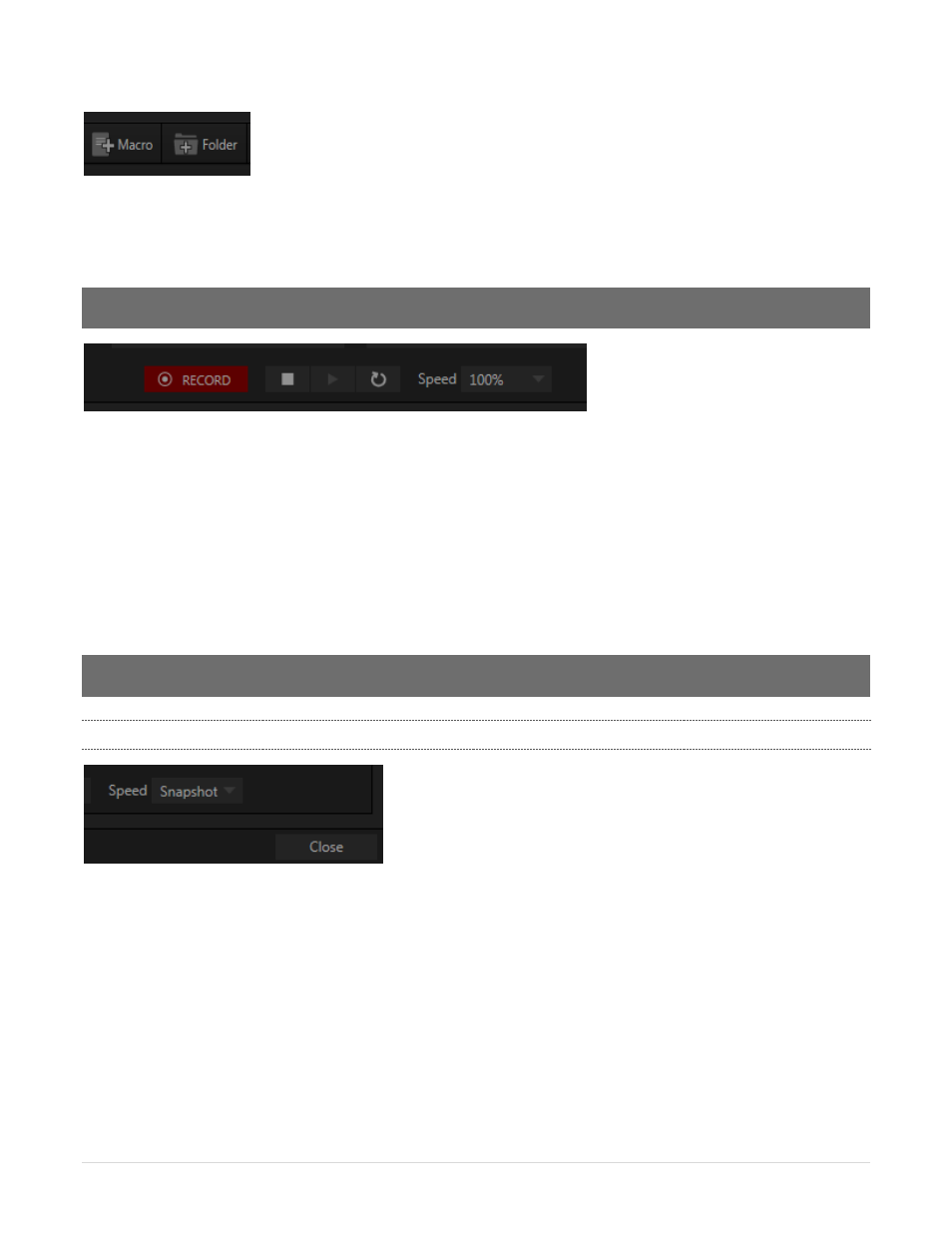1 snapshot mode – NewTek TriCaster Advanced Edition Automation and Integration Guide User Manual
Page 21

9 |
P a g e
FIGURE 3
Selecting a folder in the list (other than the System Macros folder) enables the Add Macro button (Figure 3).
Click this button to add a new macro entry.
Hint: Double-click directly on the name field for a folder or macro to edit it, or select Rename from the context
menu.
FIGURE 4
Continue to define the macro by clicking the Record button at the bottom of the panel, and then just go
ahead and perform the sequence of operations you wish to include in the macro. You can use mouse,
keyboard, and Control Surface operations when doing so. When finished, click the Stop button to complete
recording.
Test the new macro by clicking the Play button (or by double-clicking the macro entry in the list). You’ll
notice that an animated bar in the background of the macro’s entry in the list tracks playback progress.
You can set macros to loop using the button at right, or modify the playback rate using the nearby menu.
Hint: You can record a macro that includes other macros. Depending on your order of operations, you may need
to re-highlight the newly recorded macro in the list to show its Stop control (to end macro recording).
4.4.1
SNAPSHOT MODE
FIGURE 5
One option in the playback rate menu bears explanation: Snapshot is rather special. When you choose
Snapshot as the macro’s ‘speed’, you essentially tell it to jump to its end result. Any operation or delay that
is ultimately irrelevant in achieving that end is simply omitted.
Snapshot mode is very useful for macros that configure TriCaster to a particular state. For example, you
might want to instantly reconfigure multiple M/Es with different angles of a single virtual set for an
impending scene change; or perhaps you want to quickly disable LiveMatte for all Media Players at once.
The possibilities are endless.
